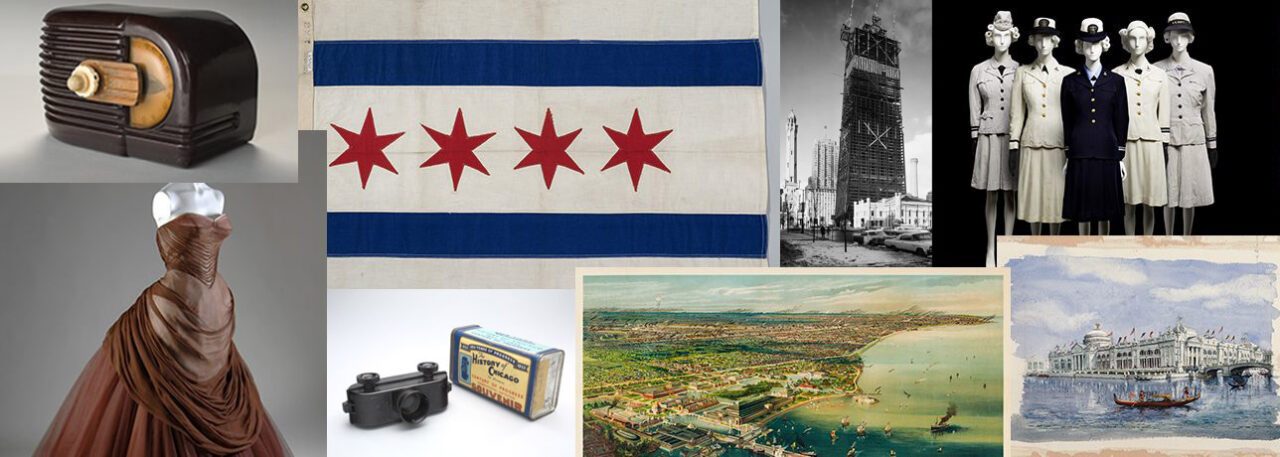Collecting Scope and Criteria
CHM collects objects, images, and documents that illuminate the history of the Chicago metropolitan area

The Museum’s collecting scope encompasses the following areas:
LIVING IN THE METROPOLITAN AREA
Demographic change, family life, communities, neighborhoods, religious life, gender, sports, recreation, class, leisure, crime, race, ethnicity, and education. We are currently collecting materials that document the COVID-19 pandemic.
WORKING IN THE METROPOLITAN AREA
The changing economic base of the city, business, manufacturing, labor, transportation, and scientific and technological development
GOVERNING THE METROPOLITAN AREA
Electoral politics, citizen action movements, community organizing, and urban planning
THE BUILT ENVIRONMENT
Architecture in its broadest social and economic context, going beyond great buildings and architects
INDIVIDUALS AND IDEAS
Art, literature, music, and philosophy produced by individuals in the metropolitan area, particularly as reflections on and interpretations of this area
For more information about the Chicago History Museum’s collection stewardship and practices, please review its Collections Policy (PDF).
Collection Donations
In evaluating donation offers, the Museum seeks to acquire objects, images, and documents that have strong potential for meaningful future use in exhibitions, programs, and for research; that fill gaps in our existing holdings; and that present opportunities to reveal or expand upon a compelling and significant story or theme of Chicago history (or American history through the Civil War).
Contextual information (e.g., history of the material’s creation/creator, subject matter, and use) is especially important to Museum staff in their evaluation of the interpretive and research potential of objects, images, and documents. The Museum also evaluates donation offers in regard to their condition, the amount of time and other resources needed to process and store them, whether there is another repository that would be a better home for them, the material’s copyright status, and a variety of other criteria.
In general, the Museum prefers to acquire original objects, images, and documents over reproductions.